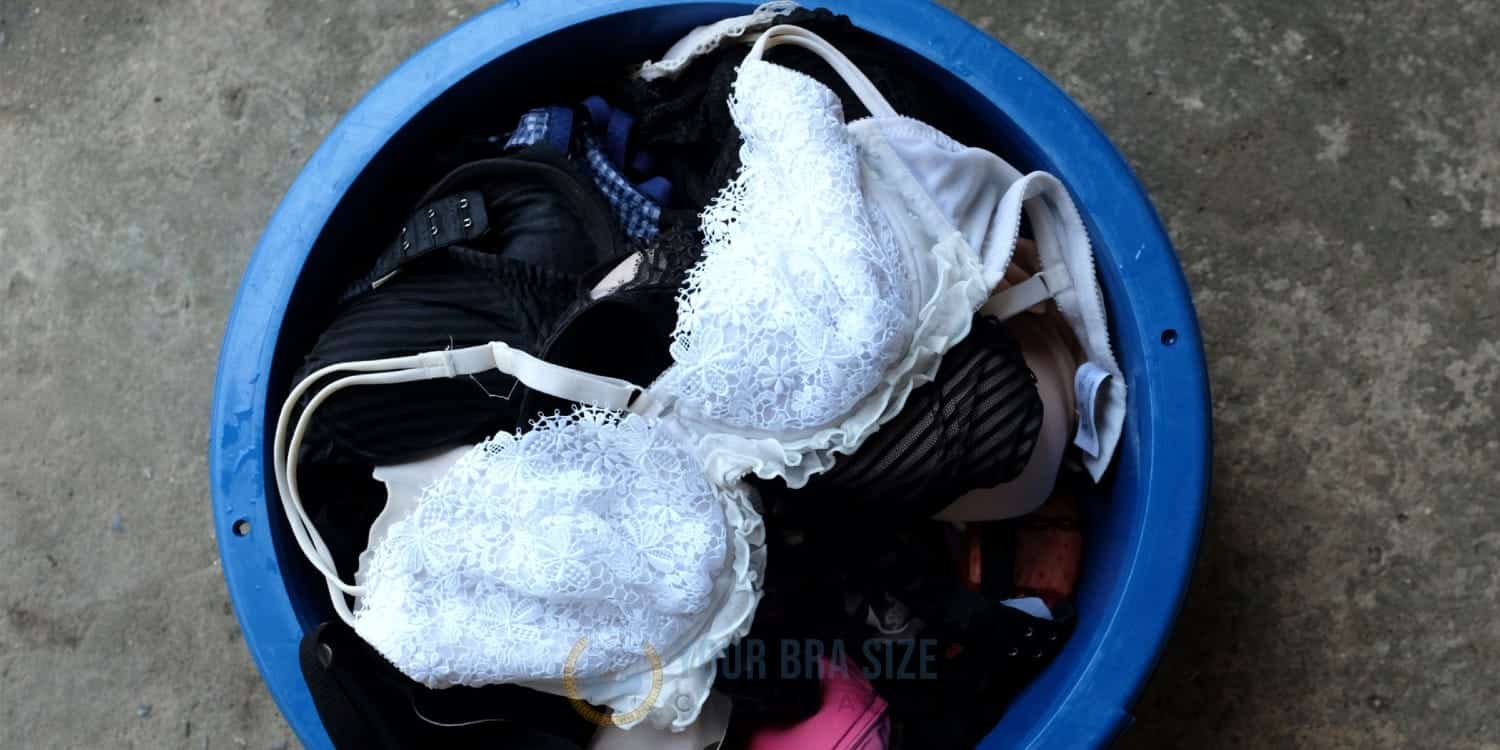The moment when a woman finds out she is pregnant, her life changes forever. From that point on, the journey of motherhood begins, and one of the most significant physical transformations is seen in the breasts. For many women, pregnancy, and breastfeeding can cause their bra size to change drastically as they prepare for this new chapter in their lives. Expectant mothers must understand how these two processes affect their bodies to make informed decisions. Here we will explore the effect of pregnancy and breastfeeding on bra size and what steps should be taken before, during, and after each stage.
The female body undergoes an incredible transformation during pregnancy and after childbirth and nursing. During this time it’s common for hormones to fluctuate during this time, which can lead to changes in breast shape and size – some may find that their bras become too tight or loose depending on individual circumstances. This can be uncomfortable and frustrating if a woman doesn’t know how best to handle such changes.
Breastfeeding, while providing various health benefits for both mother and baby, can also bring about further changes in bra size due to milk production levels increasing or decreasing at different times during lactation periods. Understanding how your body responds to these natural bodily functions helps you anticipate any potential shifts in cup sizes so you are better prepared for them ahead of time. With the correct information about breast development during pregnancy and breastfeeding, you’ll have all the tools necessary to ensure your comfort throughout this exciting period of your life!

Anatomy Of The Breast
While often seen as mere objects of beauty, our breasts are complex and dynamic organs. They play a vital role in the health and development of women throughout their lives. To understand how pregnancy and breastfeeding can affect bra size, it is essential first to explore the anatomy of the breast.
The human breast consists of glandular tissue which produces milk for lactation during pregnancy or after childbirth; the fat that gives shape and volume to each individual’s chest size; skin covering both the outer surface and inner lining; Cooper’s ligaments that provide support; and the nipple surrounded by an area called the areola. The structure of the breast remains relatively unchanged until puberty, when hormone levels increase, resulting in rapid growth of mammary glands and increased breast size. Breast development continues through adulthood with varying levels depending on genetics and lifestyle factors such as diet, exercise, stress levels, etc., ultimately determining one’s final cup size.
Good overall breast health relies on maintaining healthy habits throughout life. This includes eating nutritious food, exercising regularly, avoiding smoking/alcohol consumption if possible, conducting monthly self-exams for lumps or any changes in appearance or texture (including nipples), seeking medical attention right away if anything out of the ordinary is detected, and familiarizing oneself with proper bra fitting techniques to ensure good posture and comfortable fit—all essential elements in keeping our breasts happy! As we explore specific aspects regarding bra size changes due to pregnancy/breastfeeding, let us remember that knowledge equals power when understanding our bodies.
Factors Influencing Bra Size
Moving on from the anatomy of the breast, several factors influence bra cup size. Body weight is one of them; as we gain or lose weight, our breasts may expand or shrink accordingly. Exercise level is also essential – regular exercise can help strengthen some muscles in your chest area, leading to a more lifted bustline and improved breast shape. Breast lift exercises such as push-ups can also be beneficial for supporting the breasts over time. In addition, breast shape can affect how well certain types of bras fit our bodies – those with more considerable upper fullness may need additional support. In contrast, those with smaller fullness may not require as much padding and structure in their bras.
It’s important to note that all these factors are subject to change during pregnancy and breastfeeding stages. Both body weight and breast size will fluctuate during this period due to hormonal changes. Women who nurse their babies often experience a temporary increase in the cup size before returning to pre-pregnancy lengths at around six months postpartum. But even after childbirth, many women find they have lost elasticity in their skin resulting in sagging breasts regardless of whether they’ve nursed. This loss of skin elasticity is why pregnant women need to wear correctly fitting maternity bras that provide adequate support throughout their pregnancy journey.
The right type of bra is essential when dealing with changes related to pregnancy and/or nursing — look for styles explicitly designed for mothers that offer extra coverage while still providing enough flexibility for changing shapes and sizes. A professional fitter should be able to recommend different options based on individual needs and preferences. With the proper knowledge about what influences bra cup size, you’ll be equipped with the information needed to make informed decisions about your lingerie wardrobe!
Changes During Pregnancy
Pregnancy brings various physical and emotional changes, and many women find that their bra size needs to be adjusted accordingly. As the body expands throughout pregnancy, several factors can come into play regarding how much one’s bra size increases or decreases.
- Weight gain: Most pregnant women naturally experience some weight gain as they progress through their pregnancy, likely leading to an increase in cup size.
- Hormonal fluctuations: During pregnancy, certain hormones are released, which can cause your breasts to swell and become tender, possibly leading to an increase or decrease in cup size based on individual differences.
- Ribcage expansion: The ribcage is known to expand slightly during pregnancy due to hormonal changes, potentially resulting in a need for larger band sizes even if no change in cup size occurs.
- Fluid retention: Fluid may build up around the breast tissue during pregnancy, resulting in a temporary increase in bra sizing over time until the fluid has been shed from the body post-delivery.
The effects of these physical changes caused by pregnancy can have profound mental health implications for pregnant individuals, including feelings of insecurity about appearance and self-confidence related to an overall sense of identity at this critical stage of life. It is essential for those who experience significant shifts in their bodies during this period to seek out support systems when needed – both emotionally and physically – such as Bra Fitting Specialists that can help them determine what bras best suit their changing shape throughout the nine months ahead!
Effects Of Breastfeeding On Bra Size
Breastfeeding can cause changes in breast anatomy that lead to a change in bra size. Breasts usually become full and round during pregnancy, with the nipples becoming more prominent. After childbirth, breastfeeding causes further growth of the breasts as well as an increase in size due to engorgement. This could mean your current bra no longer fits correctly or is uncomfortable.
It is essential to be aware of these changes before and after breastfeeding to ensure you are wearing the right-sized bra for your body shape and size. When it comes to finding a good-fitting bra, getting measured professionally by a trained fitter is always advisable, especially when making long-term decisions about what bras will fit best while nursing.
In addition to professional help from experienced fitters, many online resources are available to help ensure proper measurements and correct sizing for any stage of pregnancy and postpartum life. Knowing how your breasts may change over time can help avoid discomfort or ill-fitting bras, ultimately affecting one’s confidence or comfort level throughout their nursing journey. We discuss solutions for uncomfortable fit caused by changing sizes during pregnancy and breastfeeding.
Solutions For Uncomfortable Fit
As the old saying goes, “Prevention is better than cure.” The effects of pregnancy and breastfeeding on bra size can make for an uncomfortable fit. To help alleviate any discomfort, here are some solutions to consider:
| Bra Fitting Tips | Breast Lift Exercises |
| Use a band-size calculator | Yoga poses |
| Buy supportive bras | Push-ups & bench presses |
| Invest in quality lingerie | Weightlifting exercises |
| Utilize bra extenders | Squats & lunges |
Utilizing these tips and exercises may improve comfort and provide long-term benefits such as improved posture and muscle strength. Consider talking with a professional about your needs or visiting a local lingerie store for personalized advice on finding the perfect fit. With proper care and attention, you’ll be sure to find a solution that will help keep you feeling comfortable all day long.
Long-Term Implications
The long-term implications of pregnancy and breastfeeding on bra size can be significant. As the body changes during these stages, women may find that their bra sizes had changed dramatically from before they were pregnant or started nursing. For many women, this means that a new bra fitting is necessary after giving birth in order to get an accurate cup size and band size for optimal comfort and support.
Postpartum mothers must prioritize finding comfortable bras with proper sizing as soon as possible. Poorly fitted bras can cause pain, discomfort, and even damage to breast tissue over time. Women should take the time to do research on how to measure themselves accurately so they know what size bra would best suit them. Investing in good quality bras for more excellent durability and support is also recommended.
In addition, it’s beneficial for women planning on becoming pregnant or nursing in the future to consider buying a few different-sized bras in advance since their sizes could change drastically once again when those stages begin. Doing this will help ensure they consistently have appropriately sized bras available, regardless of their motherhood stage.
Conclusion
The size and shape of a woman’s breasts are often essential in how she feels about her body. We can see that the changes that occur during pregnancy and breastfeeding significantly affect bra size, with many women feeling uncomfortable with their new fit.
It’s true what they say: motherhood comes with its rewards but also its challenges! While making sense of these physical changes may be difficult, solutions are available to ensure comfort while providing support for both mom and baby. Adjustable bras, nursing bras, and band extenders – all provide options to accommodate different sizes as needed.
It’s important to remember that every woman’s experience will be unique. What worked for one person might not work for another; trial and error is pivotal here. So don’t throw in the towel if something doesn’t feel right immediately – keep trying until you find what works best for you! After all, no stone should be left unturned when it comes to your well-being and comfort!








